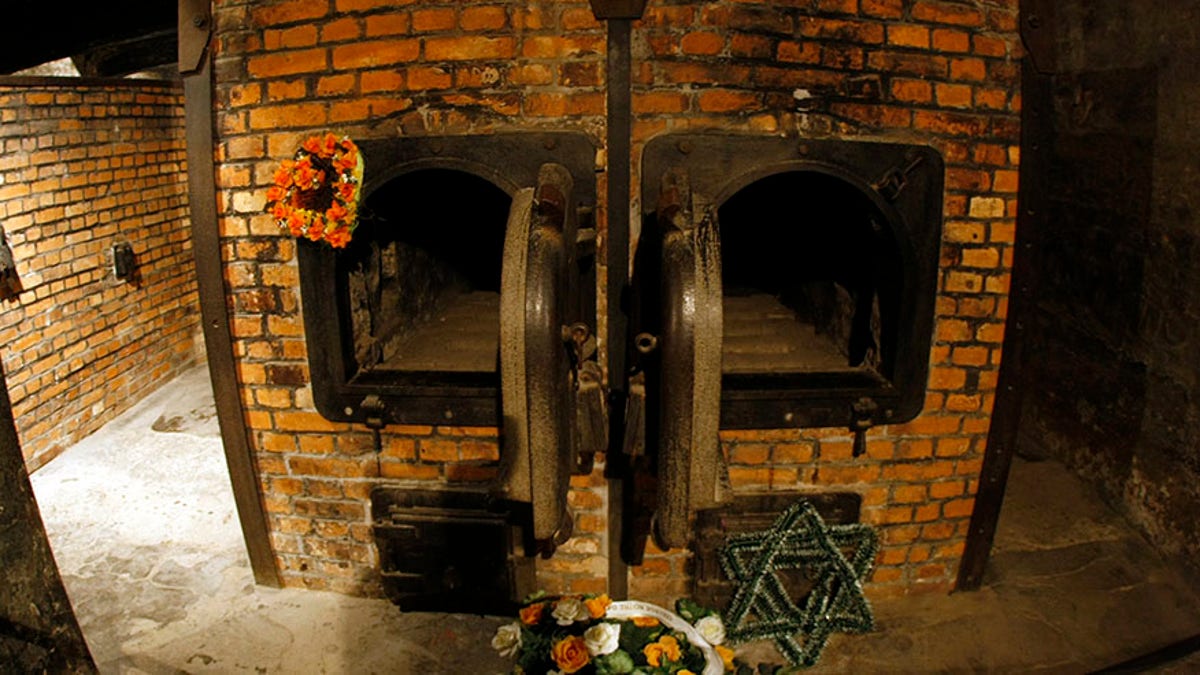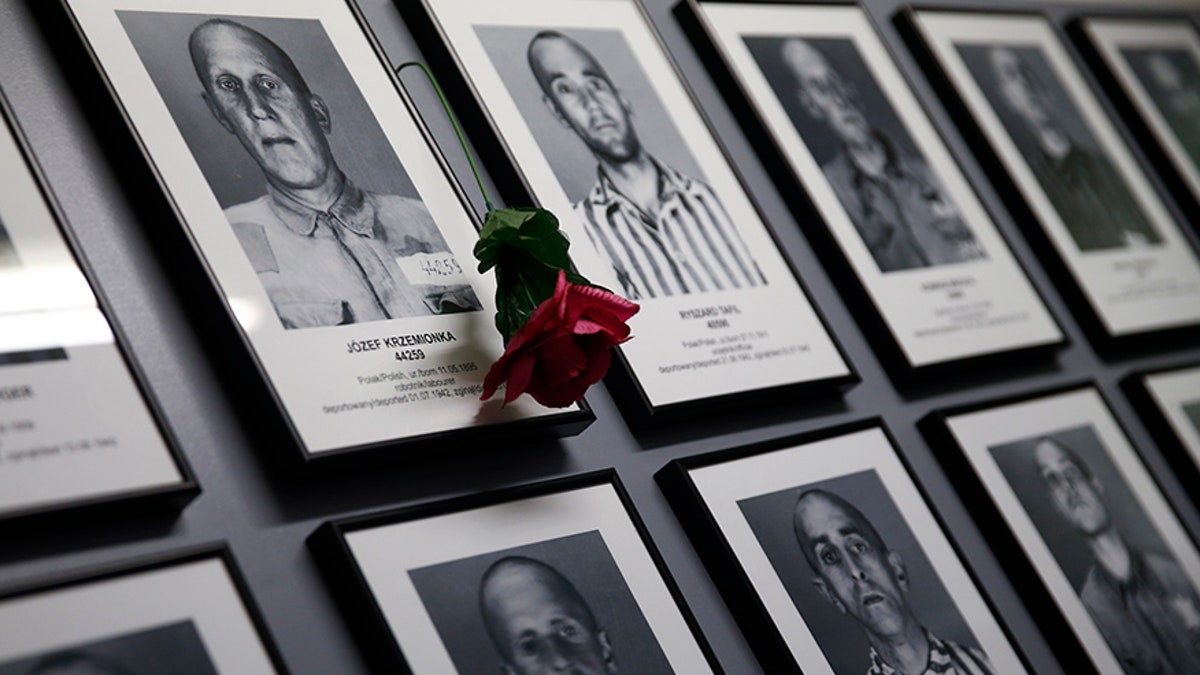
Marcel Nadjari, a Jewish prisoner in Auschwitz, wrote about his experience of having to take bodies from gas chambers to the camp's crematorium. (REUTERS)
In a letter he buried in Auschwitz, a Jewish man said he contemplated ending his life many times after being forced to remove the bodies of fellow prisoners from the gas chambers at the death camp. But a sense of revenge always held him back.
Marcel Nadjari, a Jewish merchant from Greece sent to the concentration camp by the Nazis during World War II, recounted his experience in a letter he and other prisoners buried inside a thermos that laid undiscovered for more than 30 years.
"We all suffer things here that the human mind cannot imagine," Nadjari wrote in a text he secretly penned in late 1944 before the camp was liberated in early 1945, according to Deutsche Welle.

Portraits of victims are seen on the wall in of the barracks of the former Nazi German concentration and extermination camp Auschwitz-Birkenau in Oswiecim, Poland. (REUTERS)
"Underneath a garden, there are two endless basement rooms: one is meant for undressing, the other is a death chamber," he wrote. "People enter naked and when it is filled with about 3,000 people, it is closed and they are gassed."
Nadjari, who survived the Holocaust and died in New York in 1971 at age 57, was assigned to the “Sonderkommando” unit of prisoners who took bodies from the gas chambers and burned them in a crematorium.

The Nazi slogan "Arbeit macht frei" (Work sets you free) is pictured at the gates of the former Nazi German concentration and extermination camp Auschwitz-Birkenau. (reuters)
His letter was discovered in 1980 near Crematorium III and, using a new imaging technique, historians were able to reconstruct his words, which were almost completely illegible.
“If you read about the things we did, you’ll say, how could anyone do that, burn their fellow Jews?” he wrote in the letter. “That’s what I said at first, too, and thought many times.”
Russian-born historian Pavel Polian said Nadjari’s letter and the eight other documents found in the thermos “are the most central documents of the Holocaust.”

A card is placed between railway tracks in the former Nazi death camp of Auschwitz-Birkenau (Auschwitz II). (REUTERS)
The letter will be published for the first time ever in the Munich-based Institute of Contemporary History’s magazine this month.
It was found during a student excavation in 1980 in the forest near the ruins of Auschwitz-Birkenau’s crematory III. Five people wrote messages, mostly in Yiddish.
According to Polian, about 100 of the almost 2,000 Auschwitz inmates tasked with disposing the corpses survived the concentration camp. Of the five who wrote and buried messages, Nadjari was the sole survivor, Deutsche Welle reported.
The writings were sent to the Auschwitz-Birkenau Memorial and Museum.

A man walks on the railway tracks in the former Nazi death camp of Auschwitz-Birkenau (Auschwitz II) as thousands of people, mostly youth from all over the world gathered for the annual "March of the Living" to commemorate the Holocaust in Brzezinka near Oswiecim, Poland May 5, 2016. REUTERS/Kacper Pempel TPX IMAGES OF THE DAY - S1BETCIDRLAB
In 2013, a Russian IT specialist spent a year working on the blurred ink script of Nadjari’s writing with the help of multispectral image analysis.
“We can now read 85 to 90 percent,” Polian said.
Translations into English and Greek are in the works and are scheduled to be published in November, he added.
